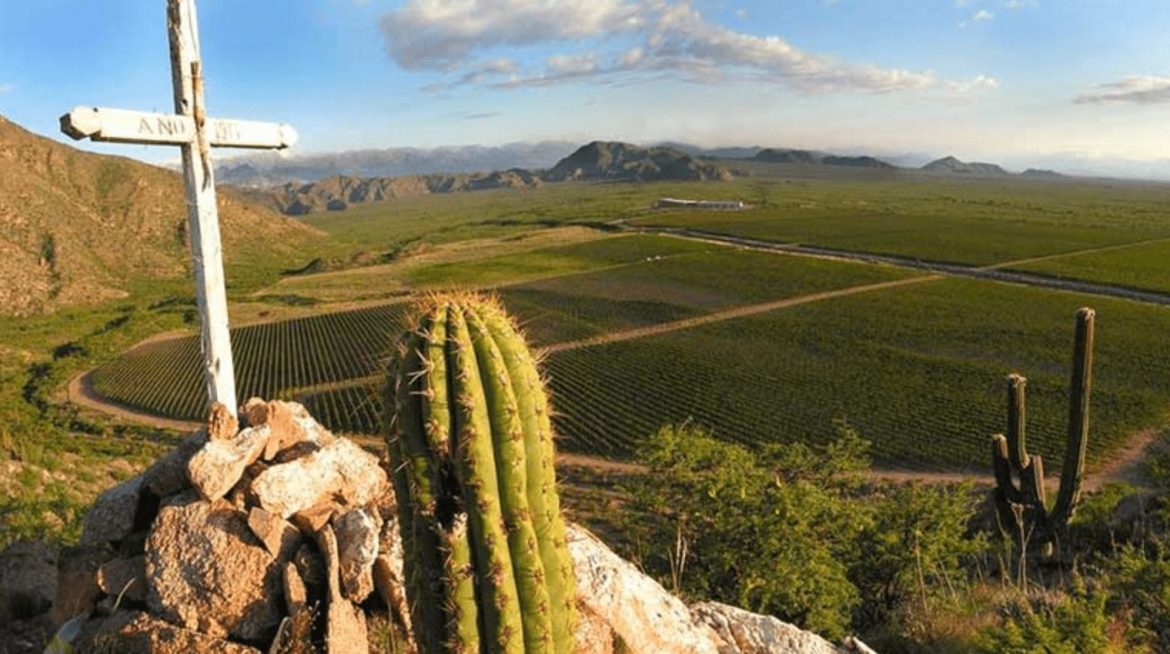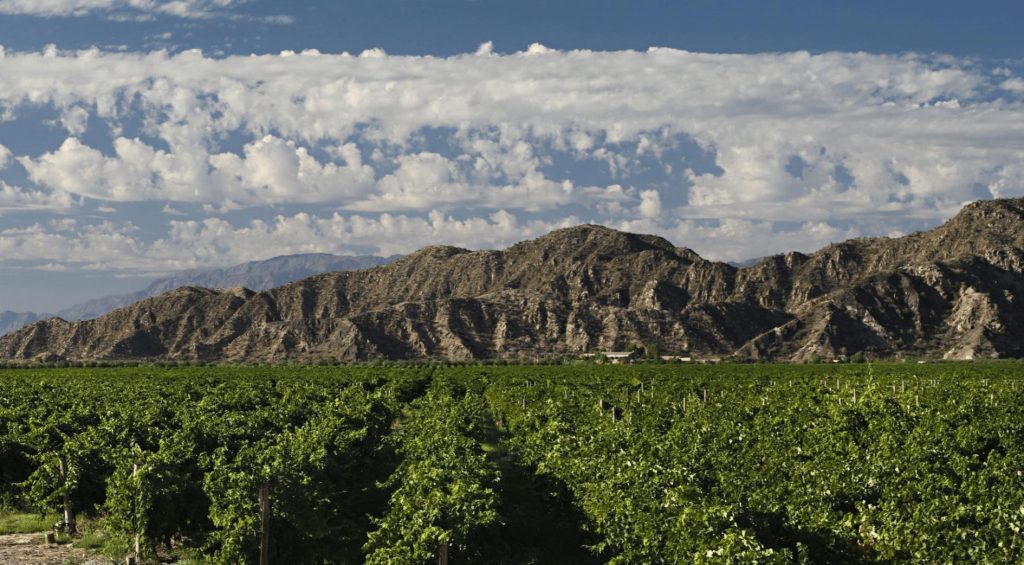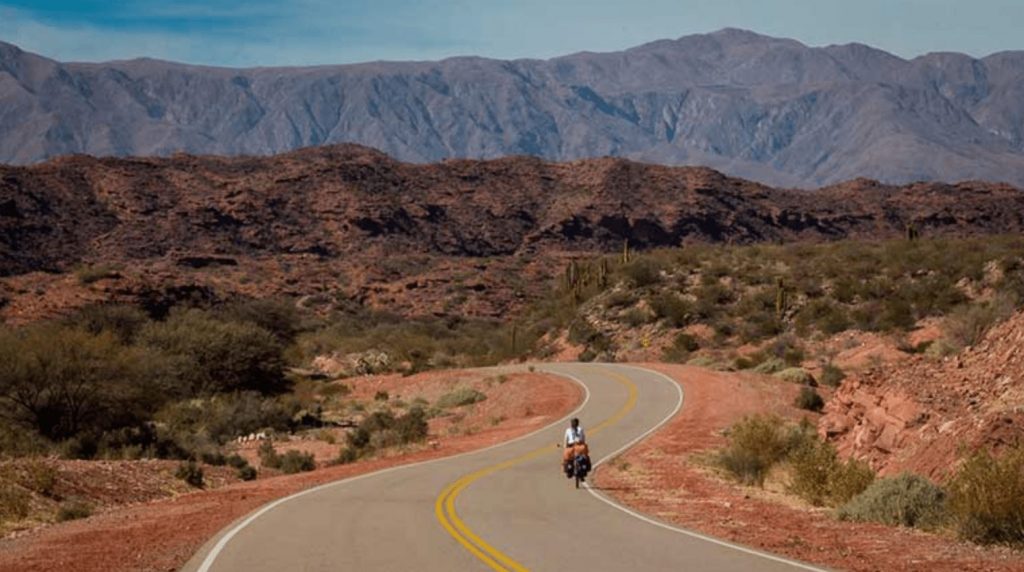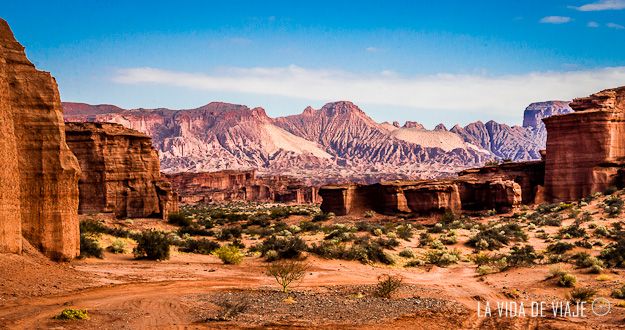It’s no coincidence that this Argentine wine region shares a name with Spain’s most famous wine region. When Spaniard and La Rioja native Juan Ramírez de Velasco came to Argentina and founded the city in this corner of Argentina in 1591, he named it after his home region and called it Todos los Santos de la Nueva Rioja. Vines soon followed along with other agriculture and the city’s name got shortened to La Rioja, with the region and province taking on the moniker too.
Over the following centuries La Rioja became a powerhouse of Argentine wine and, although its land under vine is today in decline (similarly to Mendoza and San Juan), La Rioja is Argentina’s third-biggest wine province today, and by quite a long way. With over 7,800 hectares under vine, La Rioja wines can be widely found not only domestically but also internationally. The province is home to Argentina’s largest wine co-operative, La Riojana, which is also the third-largest wine exporter in the country and has over 500 wine-growing families within its fold.
Grape varieties in La Rioja Argentina
La Rioja’s most planted and most notable grape variety is a white grape variety: Torrontés, and in particular the Torrontés Riojano variety, which takes its namesake from the region. Torrontés Riojano is the most planted of the three Torrontés varieties and is widely planted around Argentina, but the variety does thrive in its namesake region too claiming over 2,150 hectares here. (Second only to Mendoza with 3,529 hectares.)
Malbec and Cabernet Sauvignon follow, coming in almost neck and neck with 741 and 740 hectares respectively planted of each. Followed by Bonarda (630ha), Syrah (604ha), and Criolla varieties Cereza (477ha) and Moscatel de Alejandría (322ha). In general the wines of La Rioja are fruit-driven and voluptuous with easy-going, ripe tannins and an often generous alcohol level.
Not all of La Rioja’s vineyards are used for wine production, approximately 15% go towards making table grapes and raisins.
You can read more about the history and development of La Rioja wine region in our book and complete Latin American wine guide.
Fact file on La Rioja wine region
- First planted: Late 16th century
- Hectares planted: 7,809 hectares
- Number of wineries/vineyards: 1,195 vineyards
- Average vineyard size & production size: 6.5 hectares average
- Regions & sub-regions: Chilecito (6,219 hectares), Coronel Felipe Varela (744 hectares), Famatina(375 hectares), Castro Barros (258 hectares), San Blas de los Sauces (74 hectares) , General Lamadrid (59 hectares), Vinchina (48 hectares), Sanagasta (18 hectares), Capital La Rioja (11hectares)
- Latitude: 29.16°S (Chilecito)
- Longitude: 67.49°W (Chilecito)
- Altitude: 770 to 1850 metres altitude
- Geological description: Mountainous valleys. The main wine region is located between the Famatina mountain ranges and the Sierra de Velasco.
- Soil formation & characteristics: Deep sandy, alluvial soils. The soils are rockier in the higher valleys and more fertile in the lower valleys.
- Climate type and info: Continental, arid, mountainous.
- Avg. growing season day time: 32°C
- Avg. growing season night time: 17°C
- Diurnal range: 15°C
- Rainfall average: Less than 200 mm per year. Concentrated in the summer.
- Adverse climate conditions: Similarly to the other Andean wine regions of Argentina, hail storms and frost can be a risk. With the wine regions in the rain shadow of the Andes, there is also a constant risk of drought conditions and irrigation from the rivers is necessary in all vineyards.
- Most planted varieties: Torrontés Riojano (2,155 hectares), Malbec (741 hectares), Cabernet Sauvignon (740 hectares), Bonarda (630 hectares), Syrah (600 hectares), Cereza (477 hectares).
- Avg. vine age: Between 5 and 70 years old
- Vineyard management: 80% of vineyards in La Rioja are in Parral and flood irrigation, with just 15% in VSP (usually with drip irrigation) and the other 5% is mixed. There are also over 250 hectares of vines in Chilecito trained in the majuelo and cabeza (effectively head trained).
Sub-regions of La Rioja
The large majority of La Rioja’s wine production is between two mountain ranges: the Famatina mountain range and the Velasco mountain range. In the valleys between lie Chilecito (which has the lion’s share of La Rioja’s vines, accounting for almost 80%) and Famatina, both of which are considered La Rioja’s top wine regions. These are steep and winding valleys which can be quite exhilarating to drive through as many roads hug onto the mountains curves. Vineyards in general are planted on the flatter terrains and often neighbouring olive tree and walnut tree plantations.Â
To the west, over the other side of the Famatina mountain range, lie the smaller sub-regions of Vinchina and Castelli along with the La Rioja’s second-largest sub-region, Coronel Felipe Varela, which also has a significant table grape production. To the north and and further east are San Blas de los Sauces and La Costa Riojana.
Collectively the wine regions are known as the valleys of La Rioja and the Famatina valleys (Vallesdel Famatina).
Chilecito wine region guide
- 6,219 hectares
- Most planted varieties: Torrontés Riojano (1,725 hectares), Moscatel de Alejandria (315 hectares), Cabernet Sauvignon (620 hectares), Bonarda (562 hectares), Syrah (514 hectares), Malbec (491 hectares), Cereza (272 hectares), Aspirant Bouchet (158 hectares), Merlot (110 hectares), Barbera (103 hectares)
Chilecito is at the heart of La Rioja’s wine industry. Vineyards come much bigger (the average is 11.9 hectares – almost double the regional average), producers are far more, and this sub-region is home to an impressive 80% of La Rioja’s vineyards.
The name Chilecito came from the large number of Chileans who were living in the region while La Rioja had its gold mining boom. There are also almost 900 hectares of table grapes and raisins produced in Chilecito. Smaller sub-regions within Chilecito include Anguignán, Mailgasta, Nonogasta, Sañogasta and Vichigasta.
Coronel Felipe Varela wine region guide
- 744 hectares
- Most planted: Torrontés Riojano (242 hectares), Cereza (153 hectares), small quantity of Syrah (43 hectares), Cabernet Sauvignon (27 hectares) & Malbec (25 hectares)
The second-largest sub-region of La Rioja, Coronel Felipe Varela also produces table grapes and raisins (over 215 hectares). One of the lower altitude and warmer regions, Coronel Felipe Varela’s vineyards range between 1,015 metres and 1,165 metres in altitude.
Famatina wine region guide
- 375 hectares
- Most planted: Malbec (138 hectares), Torrontés Riojano (96 hectares), small quantity of Cabernet Sauvignon (27 hectares), Syrah (21 hectares) & Cereza (20 hectares)
Although Famatina is only a fraction of the size of Chilecito, it is well-known for its good quality Malbec in particular. Almost all of the regions of La Rioja are within the Famatina Valleys, but the sub-region Famatina relates to a smaller sub-region just north of Chilecito.
Castro Barros wine region guide
- 258 hectares
- Most planted: Malbec (70 hectares), Cabernet Sauvignon (53 hectares), Bonarda (36 hectares)
This eastern region is also known as La Costa Riojana (meaning Rioja’s Coast, although this couldn’t be further from the sea!) It is a particularly pretty region with quaint villages and colonial houses, and this is red wine territory (with 85% of vineyards dedicated to red varieties).
San Blas de los Sauces wine region guide
- 74 hectares
- Most planted: Torrontés Riojano (23 hectares), Syrah (5 hectares), Petit Verdot (3.5 hectares)
The northernmost sub-region of La Rioja which borders Catamarca and is 70km southeast of Tinogasta. One of the lowest altitude of La Rioja’s regions, ranging between 950 and 1,100 metres altitude, San Blas de los Sauces is predominantly Torrontés production.
General Lamadrid wine region guide
- 59 hectares
- Most planted: Torrontés Riojano (28 hectares), Cereza (11 hectares), Cabernet Sauvignon (7.5 hectares), Syrah (4 hectares)
Most of the vineyards in General Lamadrid are centred around Villa Castelli, just below Vinchina. The region is mainly planted with Criolla varieties, with the majority of growers producing Torrontés. Plantings hover around the 1,300 metre mark of altitude.
Vinchina wine region guide
- 48 hectares
- Most planted: Torrontés Riojano (20 hectares), Cereza (18 hectares), Moscatel de Alejandria (3.5 hectares)
Located just above Villa Castelli, this sub-region is also predominantly planted with Criolla varieties but is higher altitude reaching up to 1,490 metres at their highest altitude.
Sanagasta wine region guide
- 18 hectares
- Most planted: Torrontés Riojano (8 hectares), Malbec (5 hectares)
Another sub-region of La Costa Riojana, Sanagasta is towards the northeast of La Rioja and is a small region with just 18 hectares planted of mainly Torrontés and Malbec.
Capital La Rioja wine region guide
- 11 hectares
- Most planted: Malbec (8 hectares), Bonarda (2.5 hectares)
Within the city limits there are also some smaller plantations producing red wines.
Useful resources on La Rioja wine region:
Wineries in La Rioja wine region
San Huberto
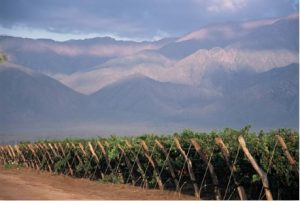
Chañarmuyo
Bodega Chañarmuyo was established by Jorge Chamas and is situated in the Chañarmuyo Valley of La Rioja.
La Riojana
La Riojana is Argentina’s largest co-operative with 500 growers and is one of the top wine exporters in the country and is situated in the Famatina Valley in the north of Argentina. The co-operative is the single largest producer of Fair Trade wines in the world.
La Rioja travel highlights
Take a road trip along Route 40 to Chilecito for great views over the Cuesta de Miranda and the reddish-green rocky mountains. Drive around the Vuelta al Pique circuit, or if you are feeling more energetic get on your bike.
Look out for the Cable Carril stations and museum, which tell the story of the world’s largest and highest cable car. It was built in 1903 in order to transport materials for the mining industry. This engineering masterpiece includes 9 stations along the 36 km route. It reaches 4,603 metres above sea level, starting in Chilecito and extending all the way to Mina La Mejicana in Famatina.
One of the most renowned tourist sites in La Rioja is the Talampaya National Park. Named a World Heritage Site in 2000, the park stretches over 2,150 square kilometres at an altitude of 1,500 metres between the Cerro Los Colorados and Sierra de Sañagasta.
Look out for dinosaur fossils in the dry bed of the Talampaya River. You’ll also see remnants of the indigenous community, including the petroglyphs of the Puerta del Cañón.
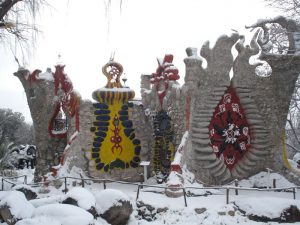
Botanists might like to visit the charming Chirau Mita botanic garden. Hidden up the slope of the El Paimán Mountains in the district of La Puntilla, you will find 60 species of native cactus from La Rioja, as well as specimens from Mexico, Cuba, the Galapagos and Brazil.
Related articles
